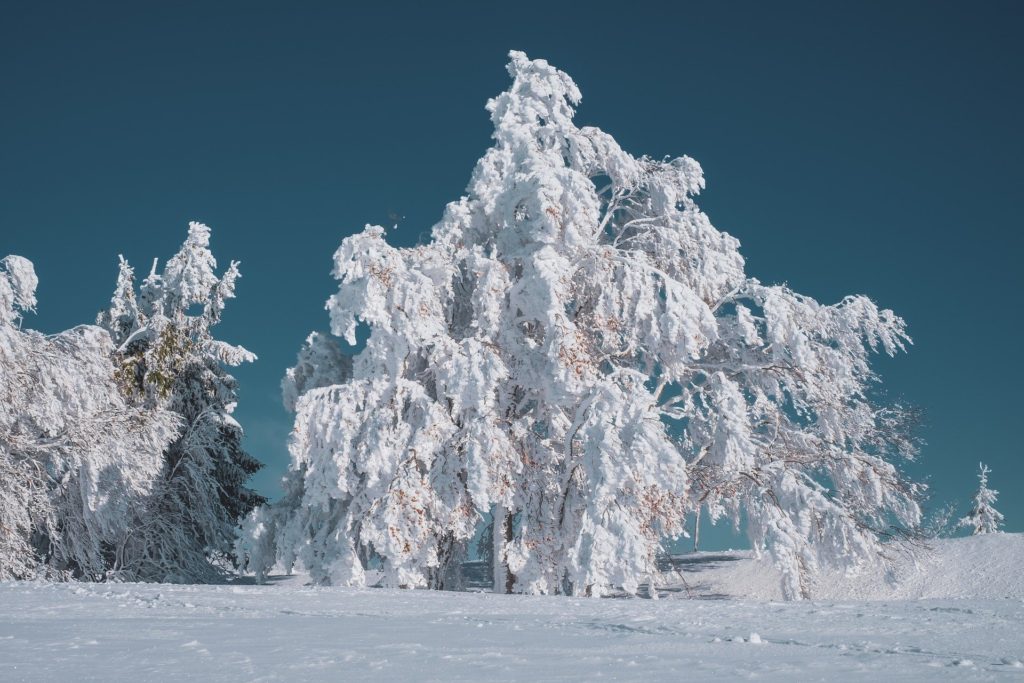Winter in Ontario means freezing temperatures, blistering winds, and ice storms. Often, these can result in fallen trees leading to downed wires, injuries, and damage to property. Sometimes this can’t be avoided, like if the storm is particularly powerful. But there are a lot of things that property owners can do to help their trees stay standing and stay healthy during the long winter season.
Protect Your Saplings
Winter can be particularly difficult for newly-planted trees that don’t have defense mechanisms like sprawling root systems and thick bark. In the fall, ensure you are mulching and watering the tree until the ground freezes. After that, the tree is largely on its own.
You can help protect it by wrapping the trunk in crepe paper tree wrap, from the bottom to the top. This helps to prevent a condition called “sunscald”, where the winter sun thaws a tree by day and freezes it at night. This condition leads to the bark cells rupturing and cracks in the trunk that can lead to the death of the tree.
Wrapping the young tree also helps to prevent animals from gnawing at the trunk during the winter.Animals like rabbits and other rodents love to gnaw on young tree bark. Once the tree matures and fissures begin to develop on the bark, this is no longer an issue.
Avoid Road Salt
Many species of trees are very susceptible to road salt (sodium chloride). Salt can cause damage to needles and branches if it is sprayed directly (such as by a passing vehicle), but having it absorbed by the soil can cause damage as well. Road salt interferes with the roots’ ability to absorb water, oxygen and nutrients from the soil. Over time, this can lead to the death of the tree. Consider using an alternative to road salt if you have trees near the road, a walkway, a driveway, or any other area where you may want to salt.
Clear Branches
It doesn’t always have to be windy for trees to succumb to winter weather. After a particularly heavy snowfall, trees can easily lose limbs or fall completely due to the extra weight of snow on the branches.
You can help mitigate this risk by gently brushing snow from leaves and branches of a tree. This is particularly helpful for younger trees with a small canopy and thin branches.
If tree branches are coated in ice from an ice storm, it’s best to leave them be so as to not damage the tree further or hurt yourself in the process!
Don’t Prune When It’s Too Cold
Winter is a great time to check your deciduous trees for problematic areas. Without the leaves, you can more clearly see any oozes, cankers, or other concerns on the bark and branches of the tree. This visibility is key for diagnosing insect infestations, fungi, and diseases more easily.
However, if you identify problematic areas in branches, it’s best not to prune them until the end of winter, just before spring. Pruning creates weaknesses in the tree that make it more susceptible to bitter winter temperatures and storms. If you see something that threatens the health of the whole tree, contact an arborist so they can recommend the best course of action. The tree may have to be removed, or you may be able to wait to prune back the area of concern.
Get a Tree Assessment Before (or during!) Winter
If you have concerns about the stability or health of trees on your property, contact P & A. Our Certified Arborist can perform tree assessments to advise if a tree needs to be removed before winter becomes too harsh. We can also advise if a tree requires treatment or any other actions that can help it stay healthy throughout the winter.
Contact us today!
